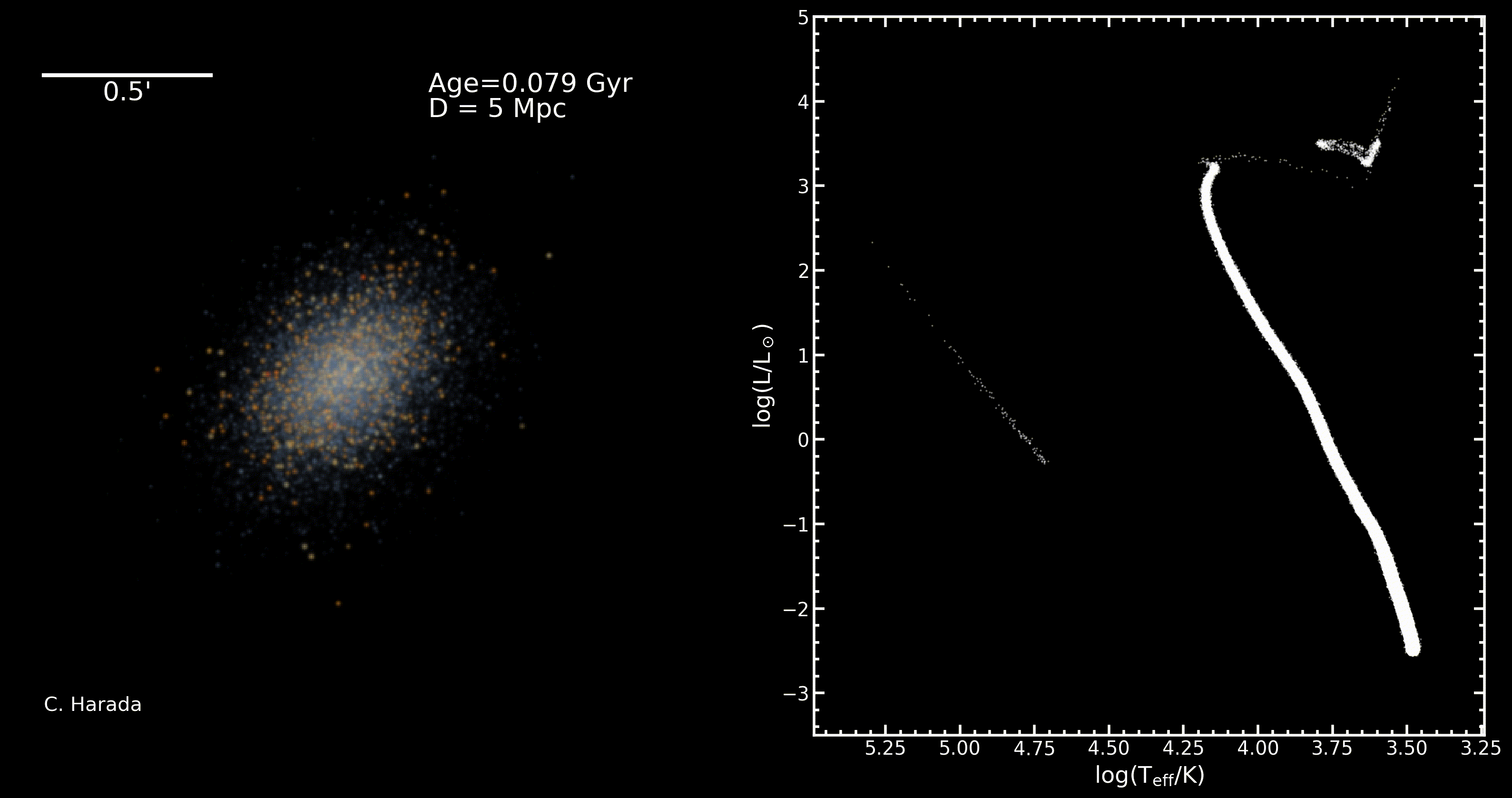Caleb K. Harada
Stellar Population Synthesis Modeling
Simple stellar populations (SSPs) are key components of models of galactic evolution and can be useful for visualizing the evolution of a coeval population of stars (e.g., a cluster). By definition, an SSP is a group of stars born at the same time with the same initial composition. The distribution of stellar masses is defined by the initial mass function (IMF). As an SSP evolves over time, the most massive stars die off first, followed by less massive stars. This leads to the overall reddening and dimming of the population over time, as well as the subsequent chemical enrichment of the surrounding ISM by exploding high-mass stars.
This simulation shows the evolution of a solar-metallicity SSP assuming a Kroupa IMF with one million stars, along with an H-R diagram of the stars within the population. The SSP, shown here for ages ranging from 100 Myr to 10 Gyr, was simulated using the ArtPop package and individual frames were compiled into a gif using FFmpeg. The spatial distribution of stars was modeled using a Sersic profile with a Sersic index of 0.8, effective radius of 250 pc, and ellipticity of 0.3. The observations were simulated in the R, V, and B filters for a 10-meter class telescope. Notice the apparent reddening and increase in apparent magnitude of the population as stars toward the high-mass end of the main sequence evolve and die off.
